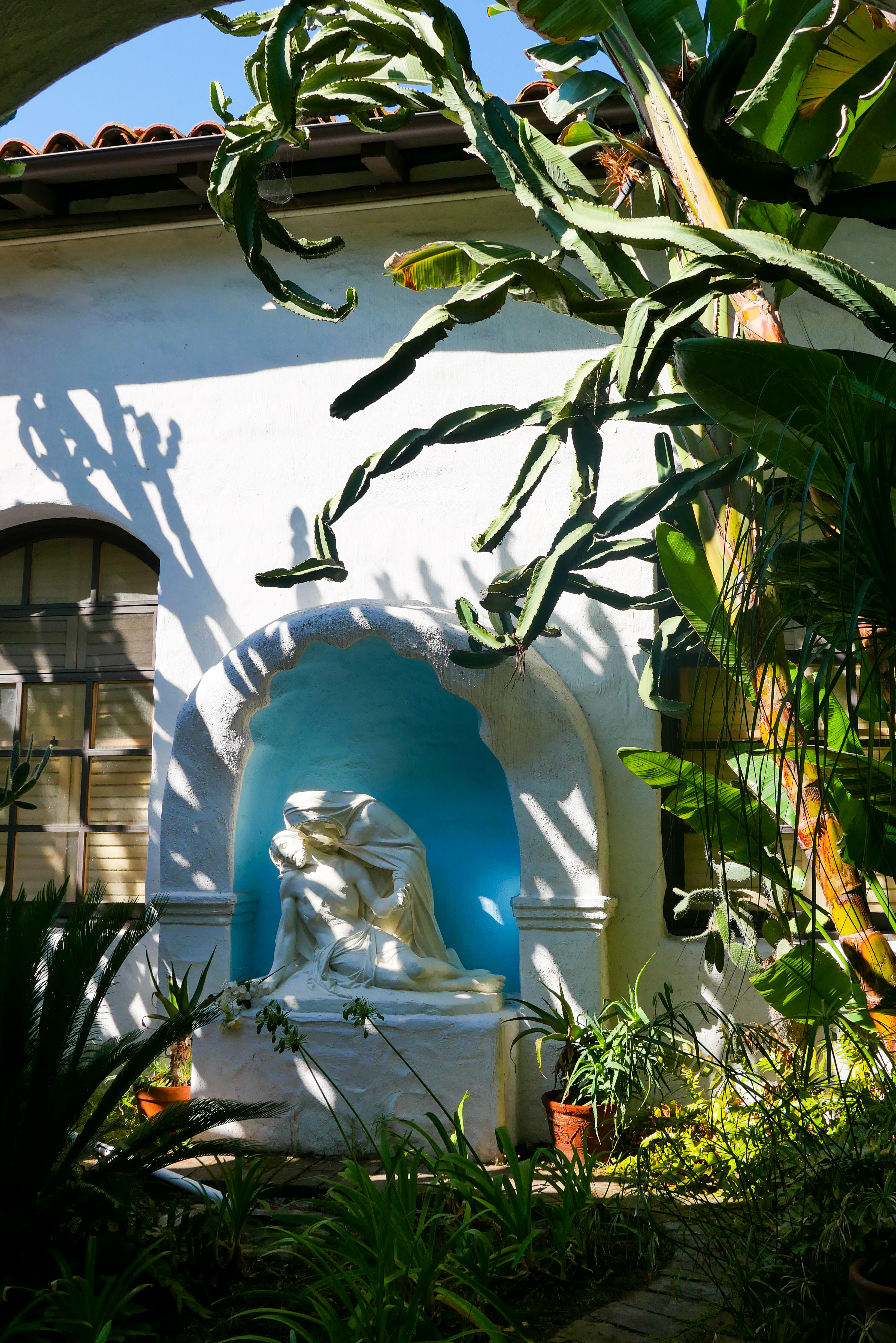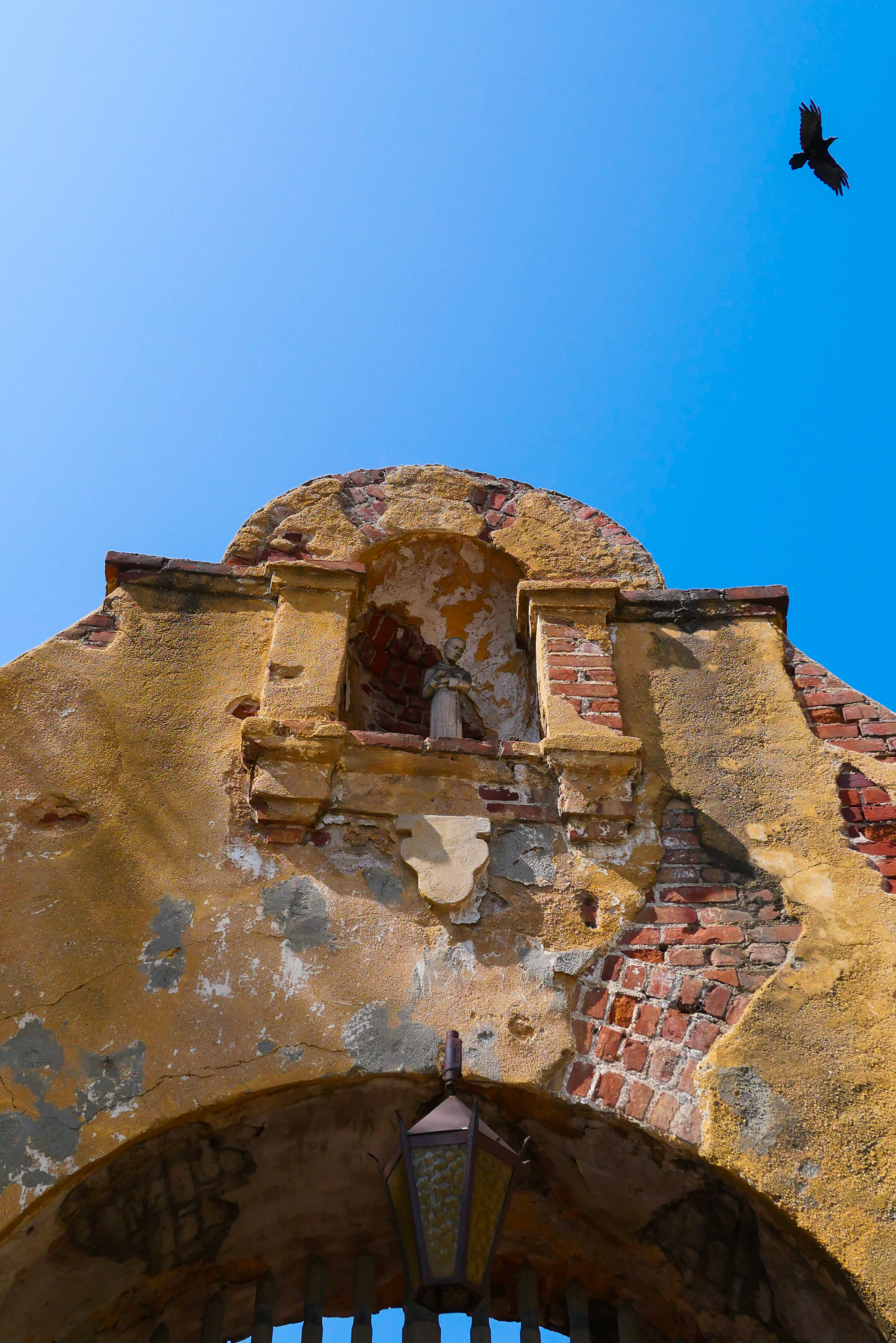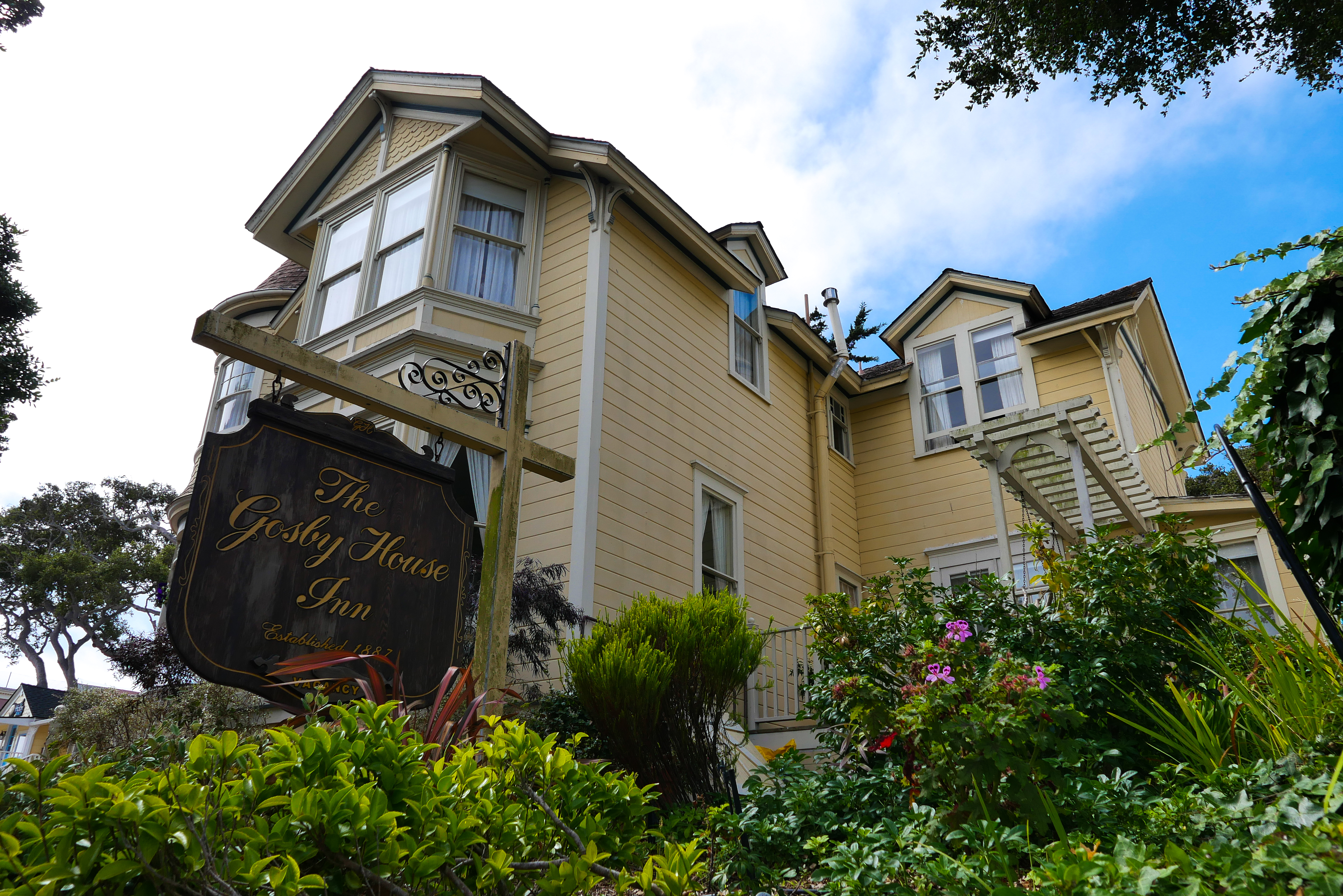Tongva singer-songwriter and poet Kelly Caballero finds her place in the history of California—plus, shares the only itinerary you’ll need for a road trip from San Diego to Monterey.
Not going to lie, when I heard the title of this Here Magazine series was “The Great American Road Trip,” I felt a little pang in my gut. For a lot of people, especially Indigenous people, the words “great” and “American” don’t necessarily always go together. But this trip was different because I got to explore within the context of history and identity as it made sense to me.
I identify as Tongva—or as my late father called us, Gabrielino Indians from the Los Angeles basin. I am also Spanish, Mexican, and Yaqui, and I was born and raised in Orange County. I wanted to highlight the beauty and the struggles of California Native Nations as I ventured the coast from San Diego to Monterey and Catalina Island, California. Little did I know this trip would bring to light another Indigenous struggle—the one taking place within myself.
The absolute beginner’s guide to planning a road trip→
You won’t see much mention of the Spanish Missions in this guide, but I stopped at five of them between San Diego and Monterey (there are about 15 total in between). It’s important to understand the pivotal role these Missions played in the genocide of California Native Peoples and Junipero Serra who oversaw them. I visit these places with the same respect and reverence I would when visiting a Holocaust memorial, unlike most people. These Missions, along with El Camino Real (you know, those bells along the 101), are painful reminders of California’s bloody inception. I walked the Mission grounds as the personification of these two identities, the colonizer and the colonized, the Spaniard and the Indian, and I thought about what took place for myself to exist.
The Spanish colonial period was followed by the Mexican Rancho period, the secularization of land to Spanish and Mexican settlers, and the American move west with the Gold Rush. Both eras, with their own forms of continued annihilations against California’s First People, have left many tribes picking up the pieces and reclaiming identities and traditions that were stolen. Every small town and every big city sits on a truth you’ve probably never heard about.
Indigenous history is mostly passed on through oral storytelling and preservation of traditions, so this information is not commonplace. Unfortunately, most people are grossly misinformed about California’s First People, our history and our presence. I like this article on the survival of California’s Indians—a condensed, true telling of our state’s founding.
A road trip from Los Angeles to Portland→
It wasn’t in the towns brochure or city signage that I found my answers, it was in reaching out to the local tribes, connecting and sharing stories, when it dawned on me. All this history, all this suffering, and yet California is still the most beautiful place in the world to me. California native nations are still here throughout the state and the land still holds all the memories of time immemorial. My day-to-day experience on my road trip was a balance between facing the harsh realities of our past and present and being swept up by the spirit of this bewildering landscape.
From San Diego to Monterey and on Catalina island, I was reminded of the Ancestors and that the Indigenous soil is what gave birth to our lives as we know it. It is easy to be angry and easy to hate these ugly beginnings, just as easy as it would be to hate myself for being made of these same histories. But if I can love California as much as I do, with all its scars, cities, and stories, then I can love myself just the same. I am forever in love with California, the magnificence and strength of its original people and all the things we are made of.
What Kelly packed for her California road trip→
The Itinerary: San Diego to Monterey, California
Day 1: Kumeyaay Territory (San Diego, California)
Do: I strayed from the popular beach cities and went to the Place Behind the Clouds, Cuyamaca. Rancho Cuyamaca State Park sits about an hour inland from its foggy coastline. A great expanse of rolling hills, manzanita forests, and waterfalls. I love the Sweetwater Trailhead. Any direction you go, there will be water. A popular destination is Green Valley Falls, but go early as everyone wants to take a dip in these pristine freshwater pools! Note: This community-led map of tribal territories is a great resource for understanding whose land you’re on.
Eat: Streetcar Merchant Chicken Bar, a black family-owned business in North Park. Picked up a Nashvillian spicy po’ boy sandwich and a watermelon lemonade to go. I hooked up my Netflix to my car and ate in the backseat before continuing.
Stay: The Hilton Garden Inn, La Mesa. I chose this destination because it was outside of the infamous and overpopulated “Hotel Circle.” Obviously, there is still a global pandemic and this hotel pulled out all the stops to make sure my room was clean and comfortable.
Other Highlights: With 18 Indian reservations in San Diego county, you’d have to go out of your way to miss the rich culture that exists here. I came by the Sycuan Cultural Resource Center to see the impressive basketry collection, read of the first Mission revolt by the Kumeyaay, and talk with the curators there about the current Kumeyaay movement to protect sacred ancestral burial grounds that are being detonated and destroyed by the construction of the American/Mexican border wall. People should be paying attention to this!
Day 2: Tongva Territory (Los Angeles, California)
Do: In Village Yaangna, in the heart of present-day downtown Los Angeles, sits Calle Olvera (Olvera Street). With its normal hustle and bustle gone quiet, I was able to see the history that hides in plain sight. A blend of Indigenous, Spanish, and Mexican culture, Calle Olvera is a part of Historical Landmark #125 El Pueblo de Los Angeles, the birthplace of the city we know today. It’s a living museum with multiple restored buildings, such as at the Avila Adobe, which was built by my relatives way back when.
Eat: A block or so from Mission San Gabriel is El Pavos Bakery, a delicious corner mercado to pick up a quick burrito de chicharron and pan dulce before venturing on! I’ve been coming here for years!
Stay: My house! I live 30 minutes south of LA and due to the high coronavirus case numbers, I opted for my own bed. There are lots of recently-opened hotels in Downtown Los Angeles, including The Freehand LA, The Hoxton Downtown LA, Ace Hotel Downtown LA, Nomad LA, and Hotel Figueroa. (Be sure to check on health and safety precautions before booking a stay at a hotel during COVID-19.)
Other Highlights: I had to see the San Gabriel Mission. Following the toppling and removal of Junipero Serra statues throughout the state, the San Gabriel Mission caught on fire on July 11. You can see its charred face and collapsed roof from beyond the gate. Some speculate it was part of the protests, some say that’s what happens when you build things on ancient Indian burial grounds.
Days 3 and 4: Pimuugna and Pimu (Catalina Island, California)
Do: This place has endless sunning, hiking, and snorkeling. I brought my snorkel set from home and spent the days exploring the reefs. I hiked to Lower and Upper Ballast point and revelled in the sacred meeting of the Isthmus. Two Harbors and popular resort destination Avalon were the largest villages inhabited by the Cataleño people. I found old shell midden near my campsite and along the trails. I also consider myself lucky to have found some beautiful shells amongst a shore made of stones.
Eat: Bring your own food! The tiny market is ravaged by mid-morning and the restaurant has a very small menu serving minimal hours. Luckily, I brought Alaskan smoked salmon and kelp pickles from home. I bought some crackers and cream cheese and ate that for two days.
Stay: Two Harbors Campground. This required some extra planning but easily done. Make sure you have accommodations booked prior to arriving. The ferry costs $37 and takes about two hours. Once you arrive and make it to your campsite (a short but arduous trek if you choose to carry your gear— or they offer a $5 luggage haul) you’ll see the most remarkable ocean view, which is only a couple minutes walk away. They will also deliver firewood to your campsite for $10.
Day 5: Travel day from Tongva Territory (Port of San Pedro) to Obispeño Chumash & Salinan Territory (Cambria, California)
Do: I changed out of my sandy camp clothes in the port parking lot and ventured on my four-hour drive to Cambria. I stopped in Santa Barbara to visit a best friend of mine and grab some food.
Eat: This is pretty much the highlight of the day. After living off salmon and crackers for two days, I dove right into some amazing dim sum at Asie on State Street. This was the one time I sat in outdoor dining to eat. So good and not just because I was starving.
Stay: Tucked away in this sleepy beach town, Cambria Pines Lodge proved to be exactly what I needed after two nights of camping. A private casita with a country-chic aesthetic, it was just so charming and comfortable I booked another night on my way back!
Other Highlights: I took a sunset stroll along the wooden boardwalk of Moonstone Beach. It is the epitome of serene and peaceful and a must anytime I’m passing through. A great place to carefully enjoy the tidepools or be on the lookout for sea otters.
6 underrated camping destinations beloved by outdoor pros→
Day 6: The Big Sur Drive! Obispeño Chumash & Salinan Territory (Cambria) to Rumsen Ohlone Territory (Carmel-by-the-Sea and Monterey, California)
Do: The Pacific Coast Highway 1 from Cambria to Carmel is easily one of the most scenic drives in the country. The majestic meeting of mountains, forest, and sea simply takes my breath away and yet fills me with life! I never have a plan when taking this drive. I pull over when and wherever my heart desires. This stretch of road offers plenty of trails, beaches, and forests to explore. I turned a two-and-a-half hour drive into six hours.
Eat: I loaded my mini cooler with a sandwich and some snacks when I left Cambria. There are few food options on this road and the restaurants that are open are crowded serving all the other Big Sur road trippers.
Stay: I felt like a princess at Gosby House, A Four Sisters Inn. This beautiful Victorian home in the historic city of Pacific Grove had gorgeous rooms, but they stole my heart with the welcome wine and hors d’oeuvre box and the socially-distant breakfast drop off. This bed and breakfast still had its warmth and charm despite the sterile and impersonal effects of life during a pandemic.
Other Highlights: Partington Cove, a trail off a random pull out on Highway 1. A place where the fresh water met salt water, the river ran into the ocean. I stayed here for a while contemplating why cities even exist.
Day 7: Rumsen Ohlone Territory (Carmel-by-the-Sea & Monterey, California)
Do: My last stop was Ichxenta Iwano, a village site of the Ohlone people located in Point Lobos State Park. While most come to marvel at the shores, I’m in awe of the obvious existence of the Ancestors that are throughout the area. Another instance of hiding in plain sight, I came across ancient grinding stones and shell midden all along the trail. Then I sat on the seaside cliff and imagined a life pre-colonization.
Eat: Driving towards Monterey, I passed a sign reading “delicious tamales.” My instincts screamed to pull over. I’ll admit: I’d been trying to be a bougie foodie this whole time (unsuccessfully), and what do you know… these tamales brought me right back to my roots and reminded me what this journey was all about. I devoured them in minutes and ordered two more. Two for $5—a great deal!
Other Highlights: 17 Mile Drive in Carmel-by-the-Sea. This is a slow scenic drive through a privately-owned stretch of ocean front land. The cost to enter is $10 (no cash). Out of all the places I went in search for otters, here they were!















